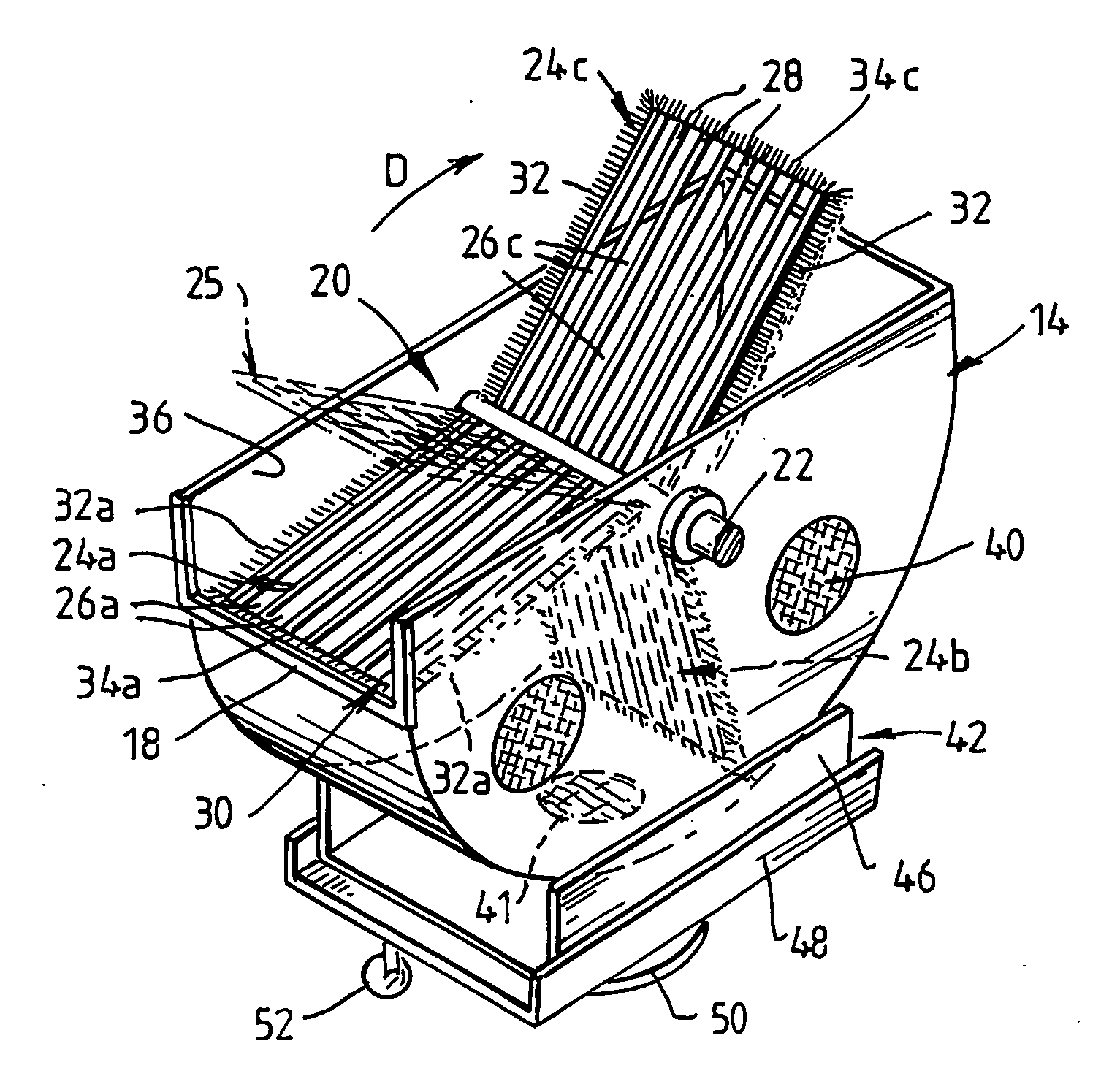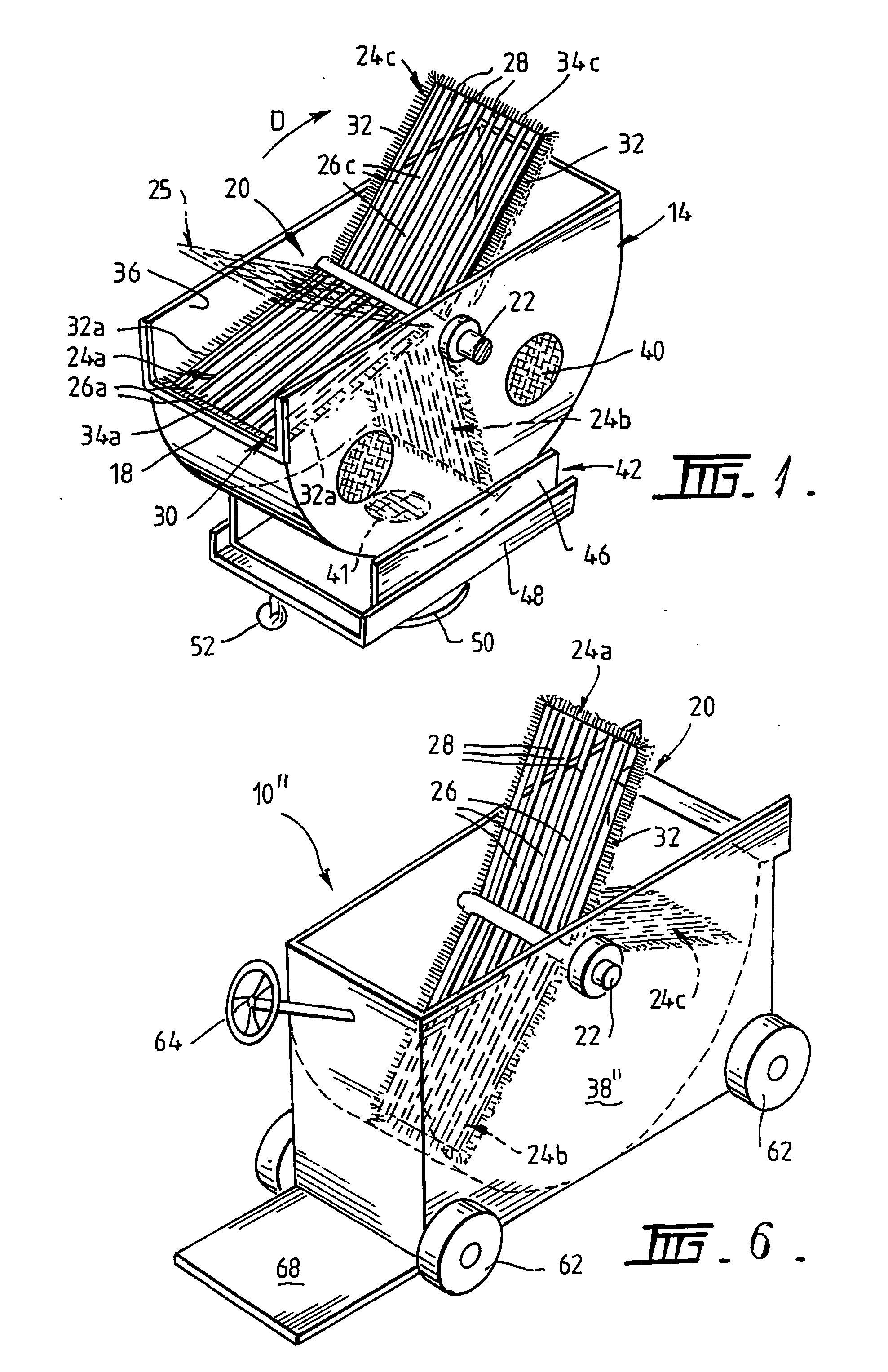System for grading marine animals by size
a technology for marine animals and grading systems, applied in pisciculture, aquaria, fish sorting, etc., can solve the problems of difficult to catch all marine animals within a tank for grading, inefficient method of grading, and large manpower and time consumption
- Summary
- Abstract
- Description
- Claims
- Application Information
AI Technical Summary
Benefits of technology
Problems solved by technology
Method used
Image
Examples
first embodiment
[0037]FIG. 5 depicts a further embodiment of the grading system 10′ in which like reference numbers are used to denote like features described in relation to the system 10, but with the addition of a ′ symbol. The substantive difference between the system 10′ in FIG. 5 and the first described embodiment is the shape of the panels 24′.
[0038] The panels 24′ are, in side view, of an L-shape and orientated so that the apex or corner of the L is disposed lower most in the receptacle 14 when the leading edge 34 is adjacent the landing 18. In this way, the panels 24′ together with the inside wall of the receptacle 14 form a small recess holding the fish 14 of a size too large to pass through the corresponding openings of the panel 24′. The panels 24′ are also demountably coupled at their axially (or lateral) innermost edge 60 so that they can be decoupled from the axle 22 and swung about their lateral edge 34 to assist in guiding the fish 12 through the transfer channel 54 to a correspondi...
embodiment 10
[0040]FIGS. 6-8 depict further an embodiment 10″ of the system used in an aquaculture system 45″. This embodiment differs from system 10 depicted in FIG. 1 in terms of the structure of the carriage 42″. In this embodiment, the carriage 42″ is constituted by the vessel 38″. Moreover, the vessel 38″ now constitutes a mobile tank provided with two pairs of wheels 62 with one of the pairs being steerable by a steering wheel 64. The vessel 38″ can be provided with a small motor (e.g. an electric motor—not shown) for driving or propelling the tank 38″ to various transfer channels 54 disposed along a common channel 66 linking transfer tanks 44a-44e of aquaculture system 45″ as depicted in FIG. 8. A small platform 68 is attached at one end of the vessel 38″ for an operator to stand on. Alternately, the vessel 38″ can be essentially in the form of a steerable trolley where an operator simply pushes and pulls the vessel 38″ to a desired location.
[0041] The tanks 44 in the aquaculture system d...
PUM
 Login to View More
Login to View More Abstract
Description
Claims
Application Information
 Login to View More
Login to View More - R&D
- Intellectual Property
- Life Sciences
- Materials
- Tech Scout
- Unparalleled Data Quality
- Higher Quality Content
- 60% Fewer Hallucinations
Browse by: Latest US Patents, China's latest patents, Technical Efficacy Thesaurus, Application Domain, Technology Topic, Popular Technical Reports.
© 2025 PatSnap. All rights reserved.Legal|Privacy policy|Modern Slavery Act Transparency Statement|Sitemap|About US| Contact US: help@patsnap.com



